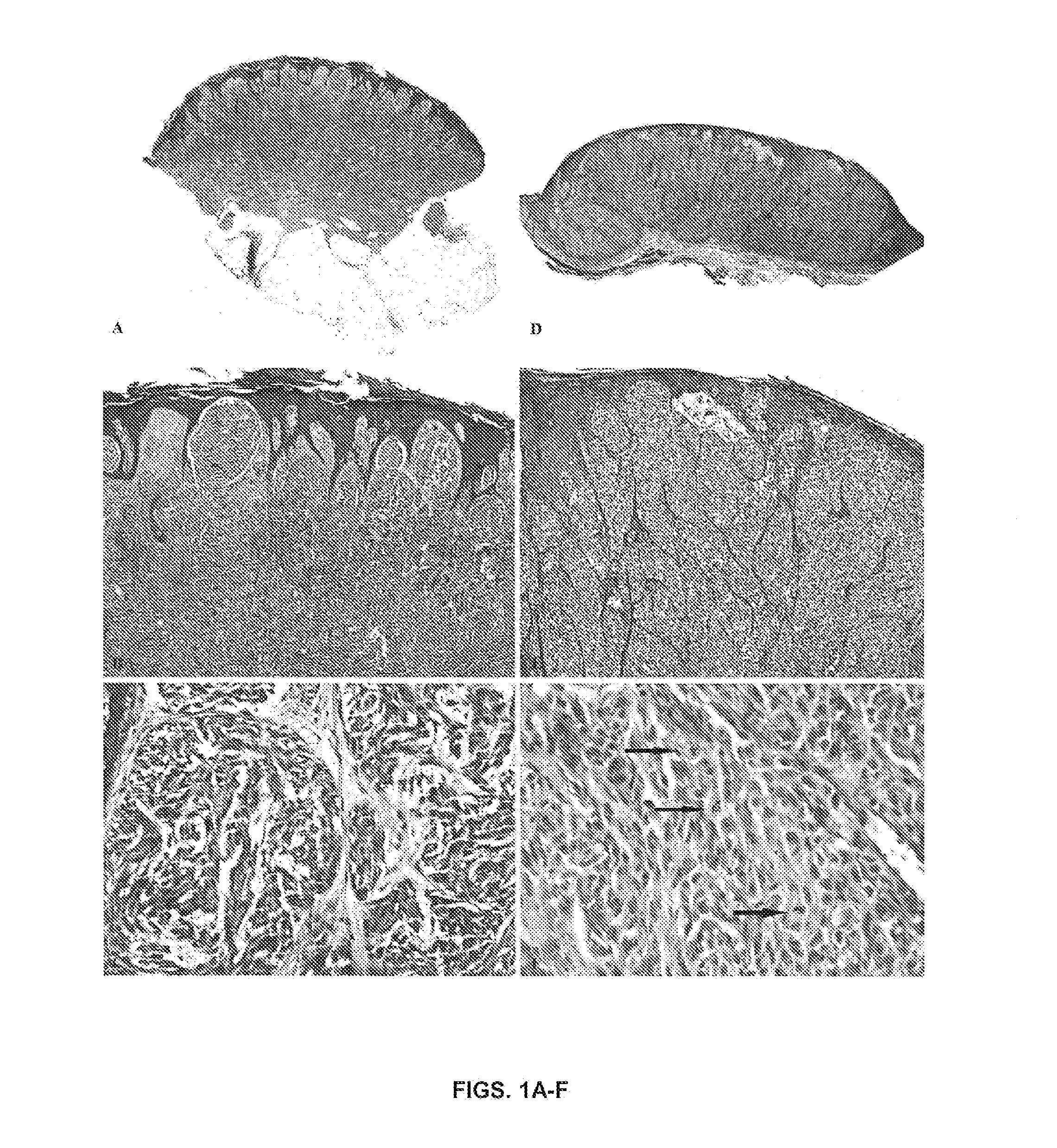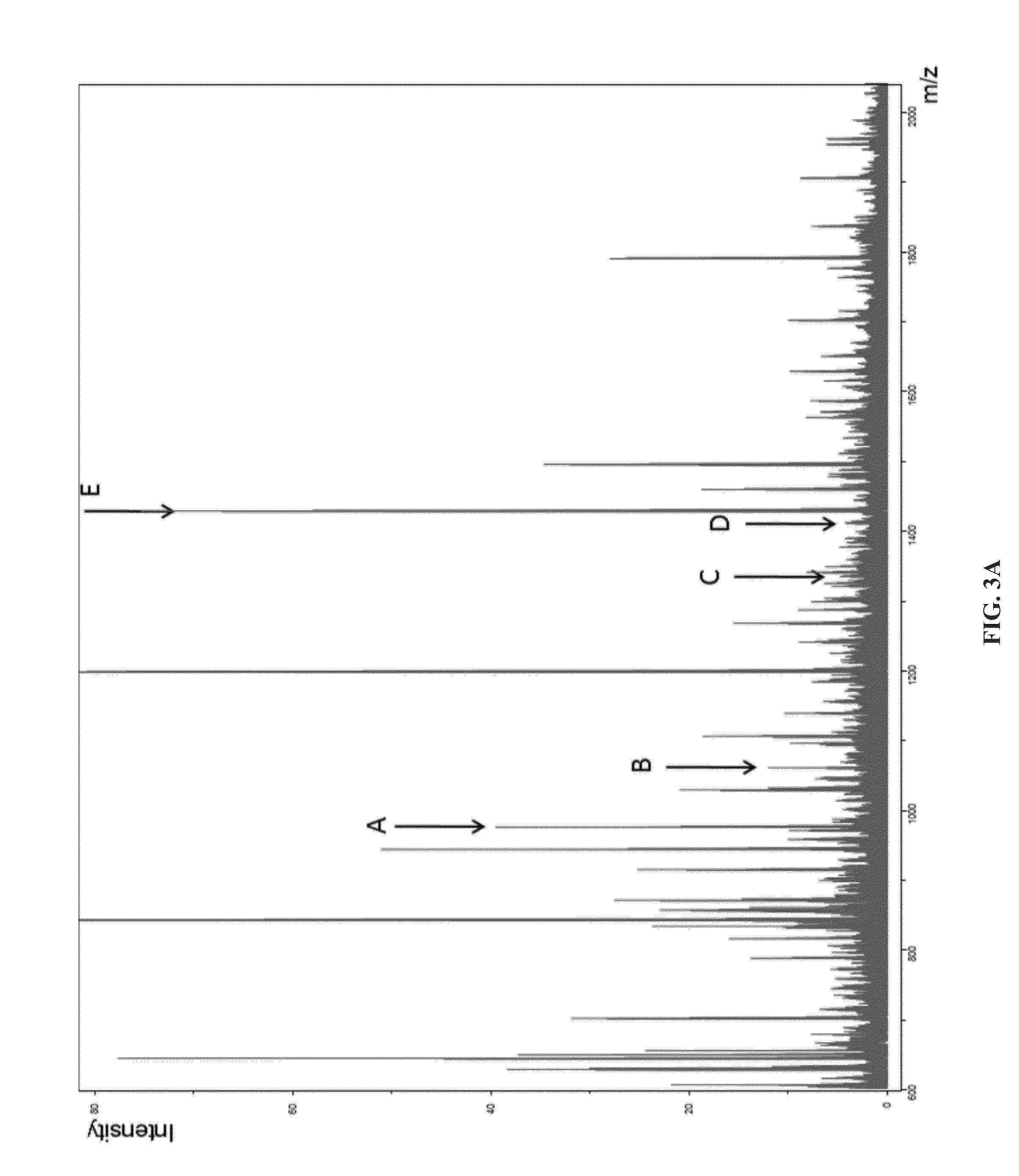Classifying Skin Lesions Using Mass Spectrometry Proteomic Approach
a mass spectrometry and skin lesions technology, applied in the field of protein biology and oncology, can solve the problem of difficult differentiation between benign sn and benign smm
- Summary
- Abstract
- Description
- Claims
- Application Information
AI Technical Summary
Benefits of technology
Problems solved by technology
Method used
Image
Examples
example 1
Materials and Methods
[0134]Tumor Specimens.
[0135]The inventors collected archival formalin-fixed, paraffin-embedded (FFPE) tissue samples of SN and SMM from the Yale Spitzoid Neoplasm Repository. The Institutional Review Board at Yale University approved the study. The histopathology of each case was reviewed by the dermatopathologist to confirm the diagnosis. The study included histologically unequivocal SN and primary cutaneous SMM, which were diagnosed initially by a board-certified dermatopathologist. The majority of these cases were seen by multiple dermatopathologists at consensus conference at the time of the initial diagnosis. In addition, all cases chosen for the study underwent confirmatory review by at least 4 other dermatopathologists from Yale Dermatopathology Laboratory. Only cases with an unequivocal consensus diagnosis of SN or melanoma with Spitzoid features (SMM) were included in the study. Histologically ambiguous Spitzoid neoplasms or SN with atypical features we...
example 2
Results
[0144]Characterization of the Study Sample.
[0145]The cohort of SN came from patients, who ranged from 1 to 48 years of age (mean, 13; SD, 10.2), 30 male and 25 female patients. The lesions were distributed on the head and neck (17), leg (14), back (10), arm (9), buttock (2), abdomen (2), and chest (1). None of the lesions recurred or metastasized, and all patients are alive with a follow-up ranging from 2 to 20 years (mean, 10.7). The SMM cohort comprised patients from 29 to 89 years old (mean, 62; SD, 14), 32 male and 26 female patients. The distribution was as follows: leg (23), back (13), arm (12), scalp (4), chest (2), ear (2), and face (2). The depth of the SMM ranged from 0.75 to 9.0 mm (mean, 3.2 mm). The follow-up ranged from 1 to 21 years (mean, 5). Representative histopathologic features of 1 patient with SN (case #1) and 1 with SMM (case #33) are illustrated in FIGS. 1A-F. A summary of clinical and histopathologic characteristics of patients with SMM is shown in Ta...
PUM
 Login to View More
Login to View More Abstract
Description
Claims
Application Information
 Login to View More
Login to View More - R&D
- Intellectual Property
- Life Sciences
- Materials
- Tech Scout
- Unparalleled Data Quality
- Higher Quality Content
- 60% Fewer Hallucinations
Browse by: Latest US Patents, China's latest patents, Technical Efficacy Thesaurus, Application Domain, Technology Topic, Popular Technical Reports.
© 2025 PatSnap. All rights reserved.Legal|Privacy policy|Modern Slavery Act Transparency Statement|Sitemap|About US| Contact US: help@patsnap.com



